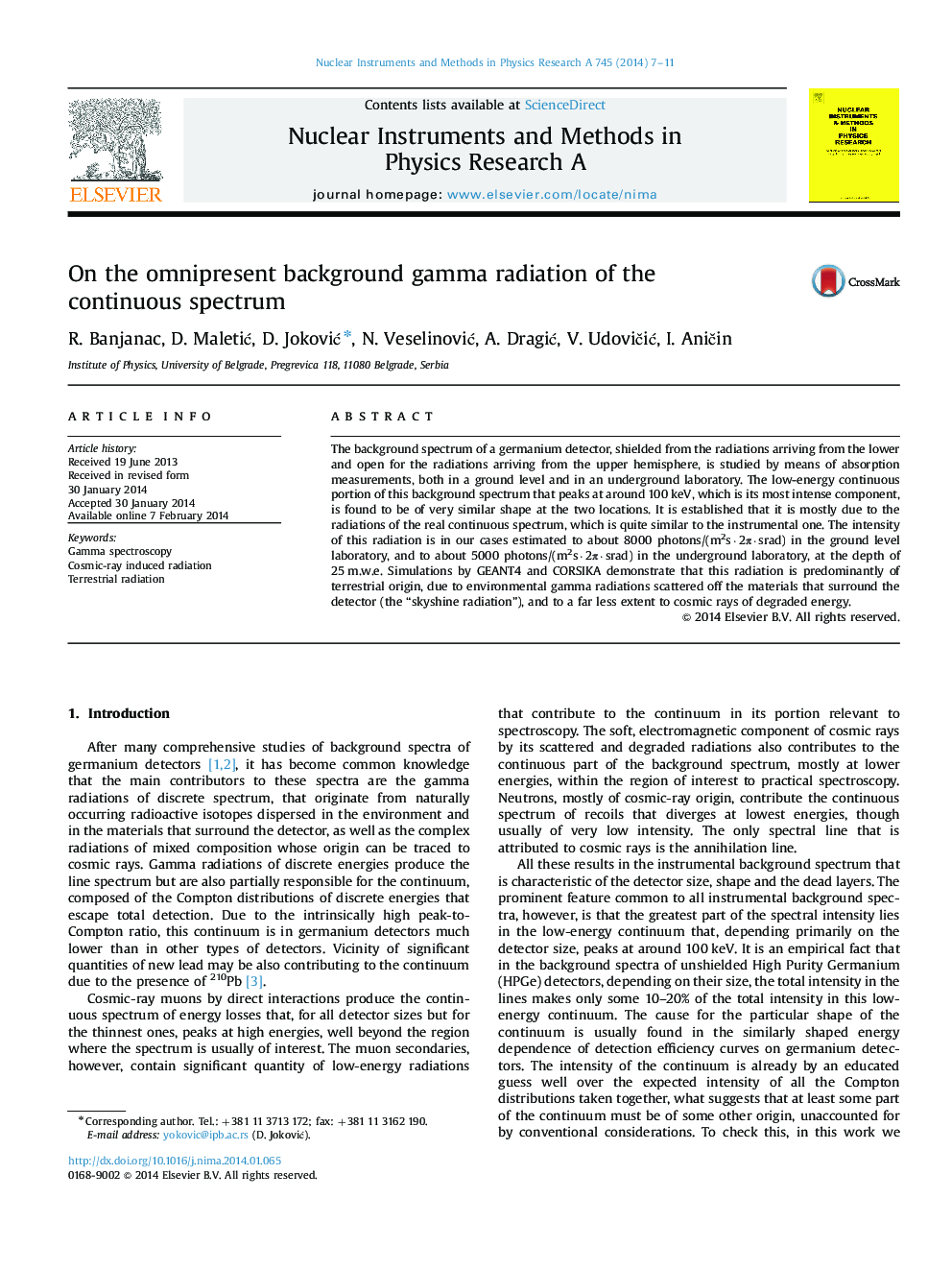| Article ID | Journal | Published Year | Pages | File Type |
|---|---|---|---|---|
| 8176454 | Nuclear Instruments and Methods in Physics Research Section A: Accelerators, Spectrometers, Detectors and Associated Equipment | 2014 | 5 Pages |
Abstract
The background spectrum of a germanium detector, shielded from the radiations arriving from the lower and open for the radiations arriving from the upper hemisphere, is studied by means of absorption measurements, both in a ground level and in an underground laboratory. The low-energy continuous portion of this background spectrum that peaks at around 100 keV, which is its most intense component, is found to be of very similar shape at the two locations. It is established that it is mostly due to the radiations of the real continuous spectrum, which is quite similar to the instrumental one. The intensity of this radiation is in our cases estimated to about 8000 photons/(m2s·2Ï·srad) in the ground level laboratory, and to about 5000 photons/(m2s·2Ï·srad) in the underground laboratory, at the depth of 25 m.w.e. Simulations by GEANT4 and CORSIKA demonstrate that this radiation is predominantly of terrestrial origin, due to environmental gamma radiations scattered off the materials that surround the detector (the “skyshine radiation”), and to a far less extent to cosmic rays of degraded energy.
Related Topics
Physical Sciences and Engineering
Physics and Astronomy
Instrumentation
Authors
R. Banjanac, D. MaletiÄ, D. JokoviÄ, N. VeselinoviÄ, A. DragiÄ, V. UdoviÄiÄ, I. AniÄin,
